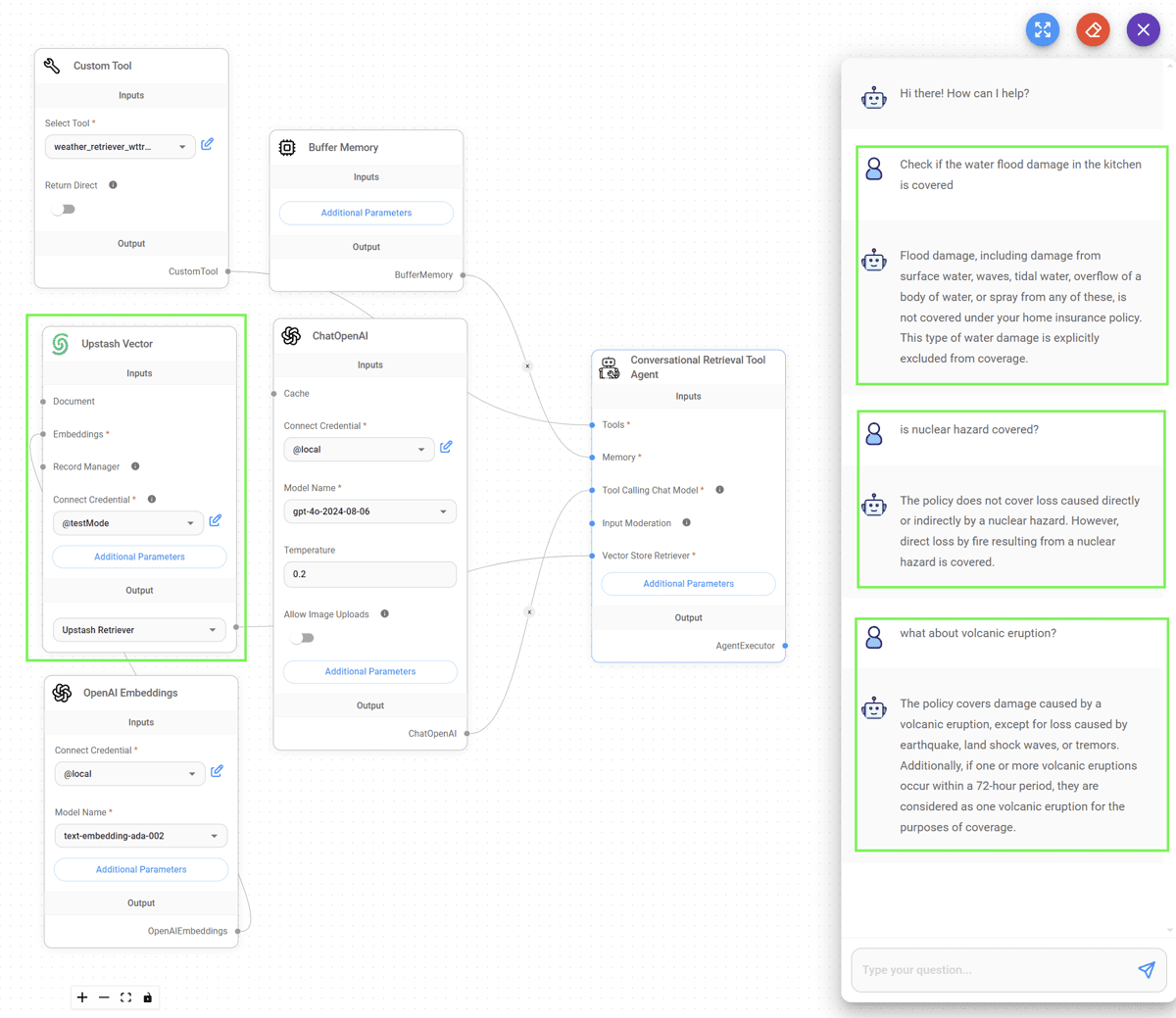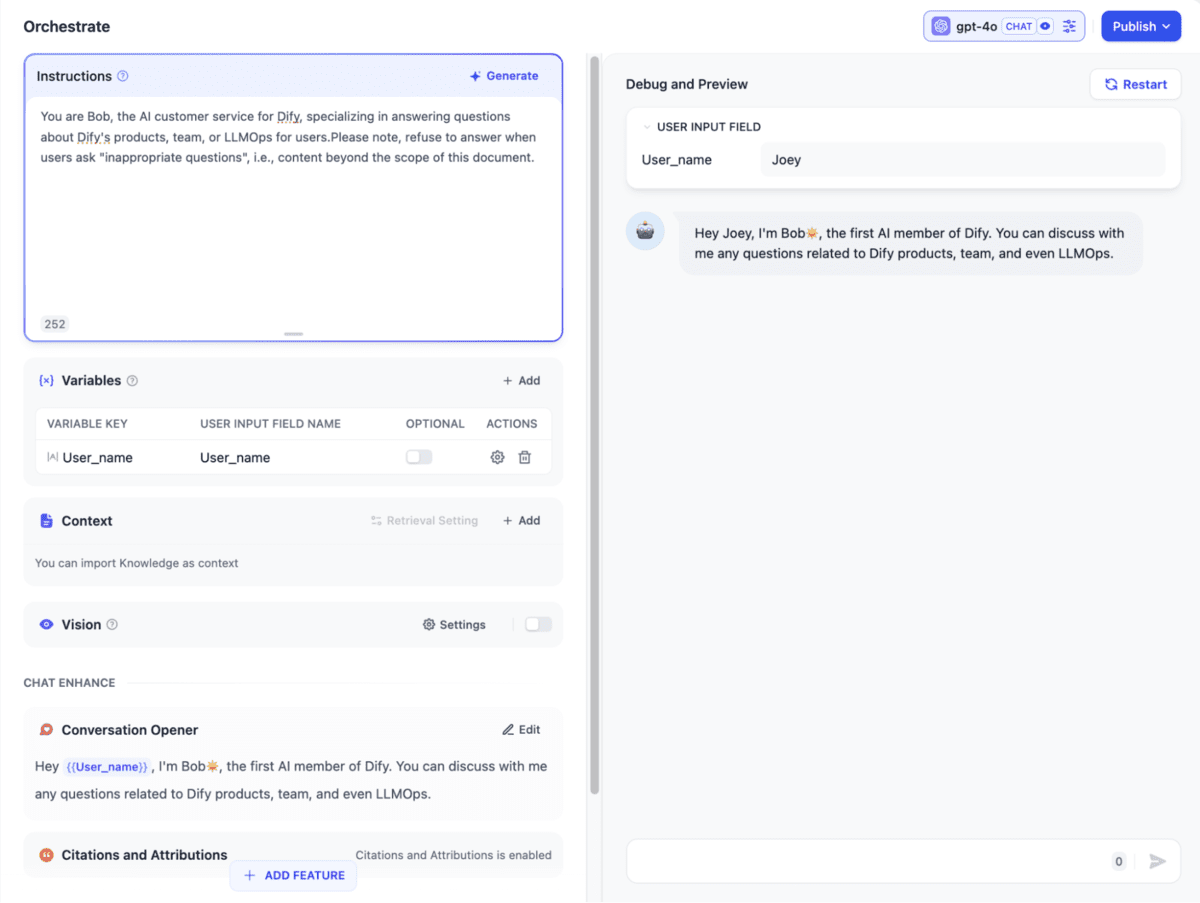Image by Author
Many business individuals and non-technical people approach me about building AI applications without technical knowledge. I always tell them that there are many non-code solutions available that are easy to use and can help them prototype and deploy solutions for anyone in their company.
In this blog, we will learn about three open-source, no-code solutions that are making waves in the AI community. These tools often have drag-and-drop components and dropdown options, meaning you don’t have to code anything. The best part is that you can build the AI workflow and test it in a chatbot UI in just a few minutes.
1. Flowise AI
Flowise AI is an open-source low-code tool designed to simplify the creation of LLM applications. It features a user-friendly drag-and-drop interface that allows users to build applications without writing any code. This makes it particularly advantageous for businesses and individuals who want to quickly prototype and develop LLM applications in an agile manner.
With Flowise AI, you can build your LLM workflow using either Langchain or LlamaIndex, create autonomous agents that can execute different tasks using tools, integrate API and SDK, and use any open-source and close-source LLM. You have the option to use Flowise AI locally or as a managed service, both of which provide the same experience and come with a dedicated chatbot for testing your application.


Image from Document Stores | FlowiseAI
2. Langflow
Langflow is an open-source, no-code AI ecosystem that makes it easy for developers, entrepreneurs, and non-technical individuals to build AI applications. It features a visually appealing and intuitive drag-and-drop interface, allowing users to create AI workflows by connecting reusable components.
Langflow offers prompt variables, Fine-tuning LLM with buttons and options, orchestration of various components like Chromoa DB as a vector store, and the ability to create custom components. Give it a try and start exploring the amazing features it provides!


Image from Simple Agent
3. Dify
Dify is an open-source platform that simplifies the process of building and managing generative AI applications. It offers a visual canvas for building robust AI workflows and supports seamless integration with a wide range of LLMs, including popular models like GPT-4o and Mistral Large 2.
Dify supports all types of LLMs, provides AI workflow orchestration, and allows you to easily create agents using various tools, as well as integration with all types of LLMs tools. You can also deploy AI applications, maintain full control over your data, manage teams, and monitor your deployed AI applications. With Dify, you can even create multimodal applications that can generate and understand images.


Image from Dify
Conclusion
As time goes on, no-code solutions will become more popular as they attract a large number of users who want to used language model models to build solutions but don’t have technical knowledge. They get inspired by using ChatGPT and then want to explore more options with a similar interface. This is where no-code solutions like Flowise AI, Langflow, and Dify come in. They provide intuitive user interfaces for easily building and deploying AI applications. You can integrate hundreds of components, LLMs models, APIs, and agents to build your highly complex AI application and deploy it. These tools provide monitoring and management features for you to identify and resolve issues.
Abid Ali Awan (@1abidaliawan) is a certified data scientist professional who loves building machine learning models. Currently, he is focusing on content creation and writing technical blogs on machine learning and data science technologies. Abid holds a Master’s degree in technology management and a bachelor’s degree in telecommunication engineering. His vision is to build an AI product using a graph neural network for students struggling with mental illness.
